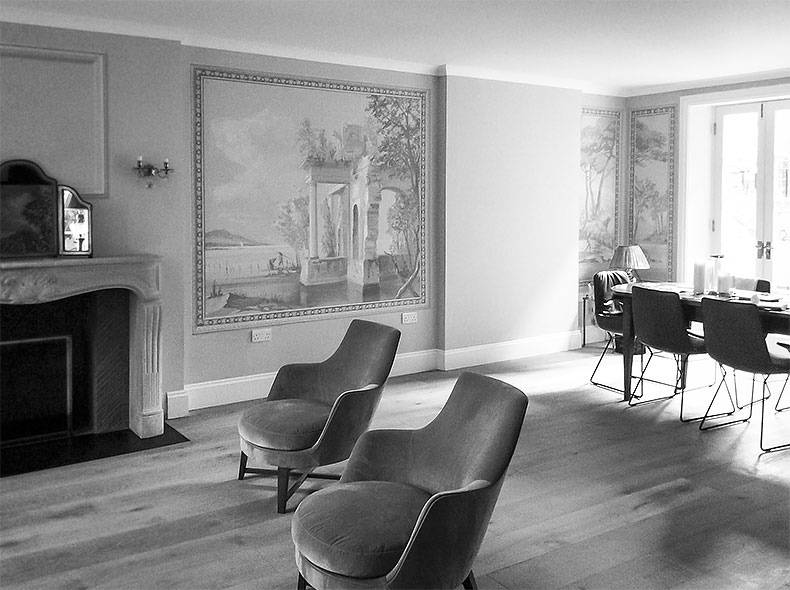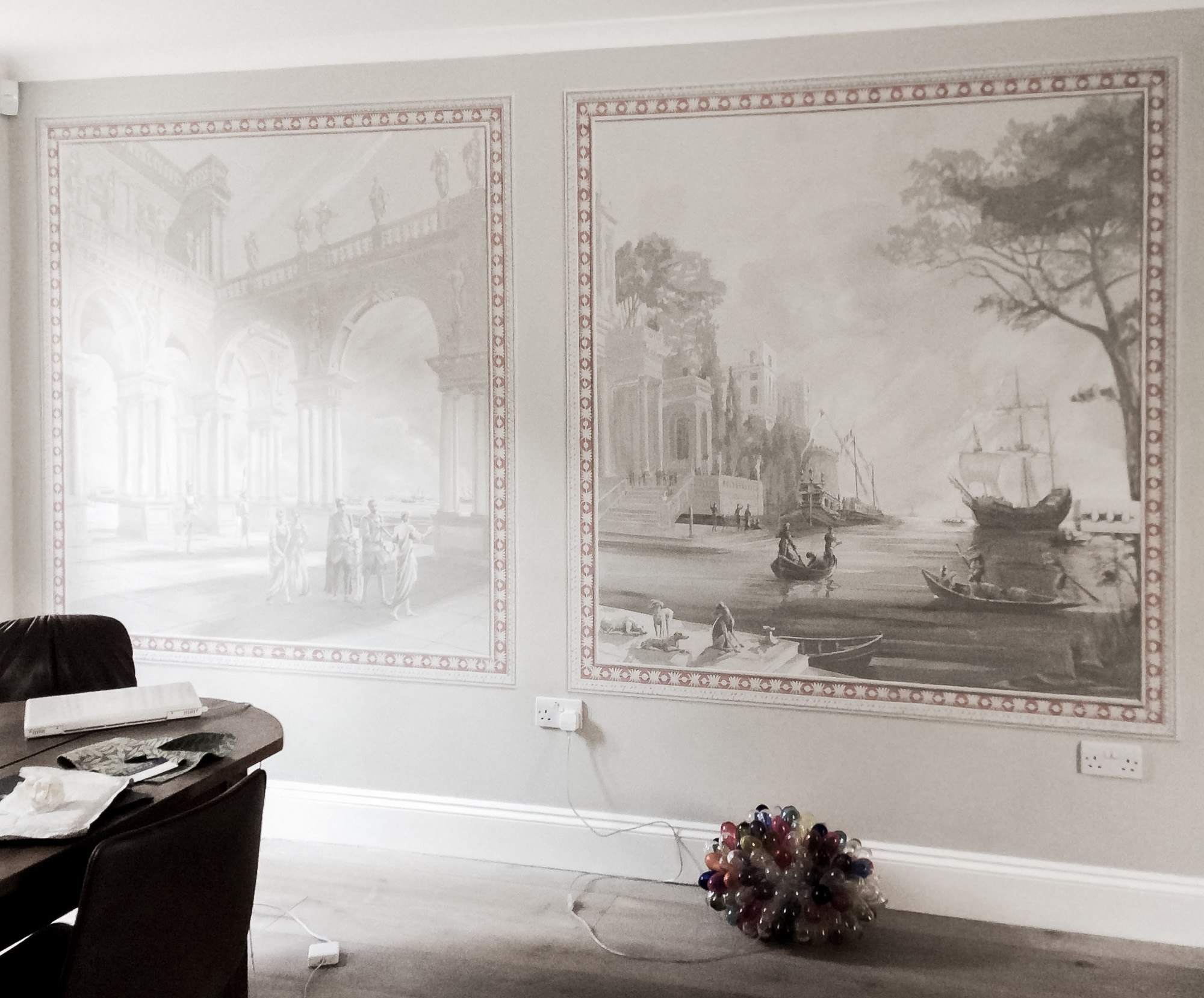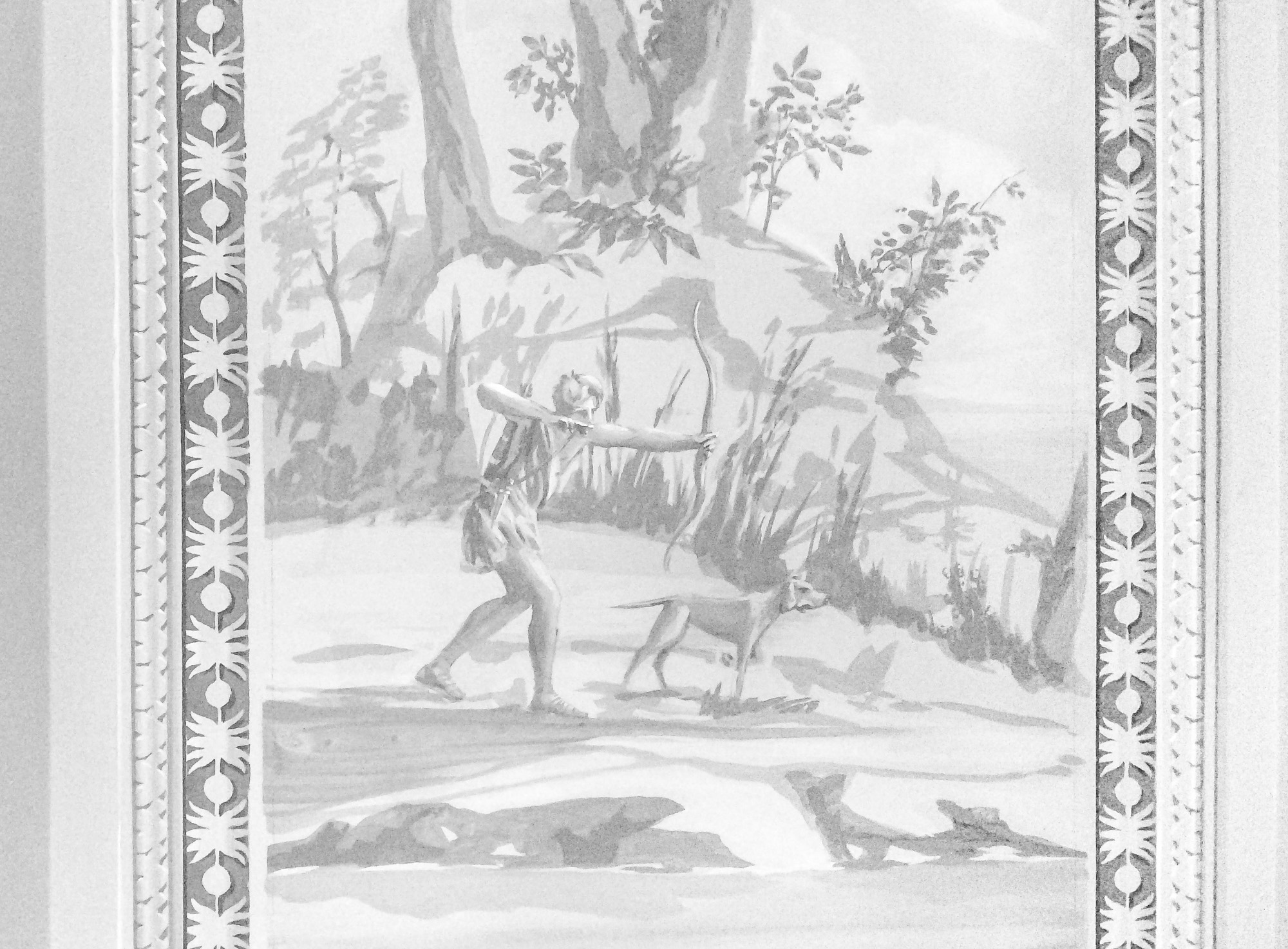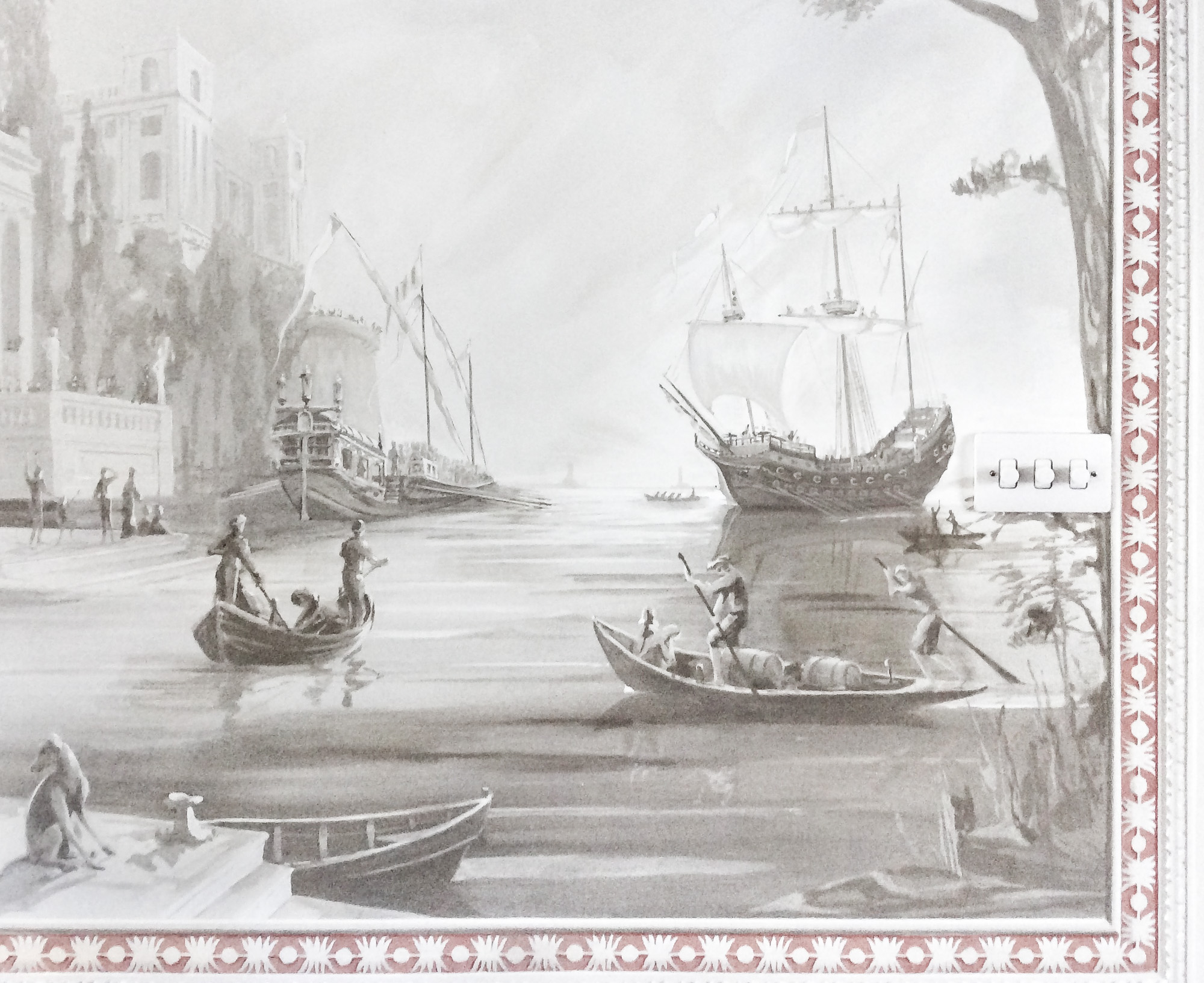These grisaille panels started as views of the Mediterranean. My clients then thought it would be fun to have the Battle of Lepanto, but the idea of painting five hundred boats in an enormous sea battle was thankfully exchanged for admiral Don Juan’s departure from Venice (he was made commander of the Holy League by his father Charles V ).
Shaping the panels
I used sketches, etching and capriccios of Mediterranean towns and landscapes. The ink drawings I had made while visiting Butrint were also useful in shaping the ten panels. The larger three architectural panels were inspired by Claude Lorrain and Italian theatre sets. These had to have their perspectives worked out using a specially made curve for the vanishing points.
Panache
I used six shades of grey, each shade having a different hue: warm, cold, warm etc. The great advantage of grisaille painting is its straightforward speed, simplification of colour seems to give more panache to the brush and the negative shapes are more interesting.
Dusty red
The finished paintings were then framed By Caterina Enni and myself. A dusty red was stenciled on to the trompe l’oeil plaster frames. Shadows and highlights were added by hand making it all feel quite Italian, I hope.




